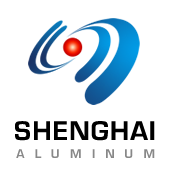Aluminum alloys have numerous technical advantages that made them one of the dominant structural material families of the 20th century. Aluminum has low density (2.71 g/cm3) compared with competitive metallic alloy systems. It also has good inherent corrosion resistance because of the continuous, protective oxide film that forms very quickly in the air, and good workability that enables aluminum and its alloys to be economically rolled, extruded, or forged into useful shapes. In this article standardized terms and products made from aluminum alloys are described.
Profiles
Profile, section, shape: Wrought product, usually extruded, of uniform cross-section along its whole length and with a cross-section other than rod/bar, wire, tube, sheet or strip. They are usually supplied in straight lengths but sometimes in coiled form. Depending on the form of the cross-section, it can be called solid profile or hollow profile.
Extruded profile: Profile brought to final dimensions by extrusion.
Solid profile, solid section, solid shape: Profile in which the cross-section does not include any enclosed void.
Hollow profile, hollow section, hollow shape: Profile in which the cross-section includes either one enclosed void, provided that the cross-section is other than a tube, or more than one enclosed void.
Precision profile: Profile, which fulfils special requirements concerning tolerances on form and dimensions.
Rods/bars
Rod/bar: Solid wrought product of uniform cross-section along its whole length, supplied in straight lengths. Cross-sections are in the shape of circles, oval, squares, rectangles, equilateral triangles or regular polygons. Products with a square, rectangular, triangular or polygonal cross-section can have corners rounded along their whole length.
Extruded rod / bar: Rod or bar brought to final dimensions by extrusion.
Cold-drawn rod / bar: Rod or bar brought to final dimensions by cold drawing.
Brazing rod: Rod made of a low melting temperature alloy for use as filler metal in brazing.
Filler rod, welding rod: Rod for use as filler metal in joining by welding.
Square rod/bar: Rod or bar of a square cross- section.
Rectangular rod/bar: Rod or bar of a rectangular cross-section. The thickness of these rods exceeds one-tenth of the width. The term “rectangular rod/bar” includes “flattened circles” and “modified rectangles” of which two opposite sides are convex arcs, the other two sides being straight, of equal length and parallel.
Hexagonal rod/bar: rod or bar having the cross-section of a regular hexagon.
Wire
Wire: Wrought product of uniform cross-section along its whole length, supplied in coiled form. Cross-sections are in the shape of circles, ovals, squares, rectangles, equilateral triangles or regular polygons. Products with a square, rectangular, triangular, or polygonal cross-section can have corners rounded along their whole length.
The thickness of rectangular wires exceeds one-tenth of the width. Wire in the upper thickness range is often called “coiled rod”. The term “rectangular wire” includes “flattened circles” and “modified rectangles”, of which two opposite sides are convex arcs, the other two sides being straight, of equal length and parallel.
Drawing stock: Semi-finished solid wrought product of uniform cross-section along its whole length supplied in coils of a quality suitable to drawing into wire. Cross-sections are approximately round, triangular or regular polygonal with dimensions usually exceeding 7 mm.
Conductor wire: Wire possessing the requisite electrical and mechanical properties for use as an electrical conductor.
Filler wire, welding wire: Wire for use as filler metal in joining by welding.
Flattened wire: Wire produced by flattening round wire between rolls or by drawing through a die with flat opening.
Brazing wire: Wire of a low melting temperature alloy for use as filler metal in brazing.
Tubes
Tube: Hollow wrought product of uniform cross-section with only one enclosed void along its whole length, and with a uniform wall thickness, supplied in straight lengths or in coiled form. Cross-sections are in the shape of circles, ovals, squares, rectangles, equilateral triangles or regular polygons and can have corners rounded along their whole length, provided the inner and outer cross-sections are concentric and have the same form and orientation. Tubes can also be formed by piercing and by forming and joining sheet or strip.
Extruded tube: Tube brought to final dimensions by extrusions.
Drawn tube: Tube brought to final dimensions by cold drawing.
Porthole/bridge tube: Tube produced by extrusion of a solid billet through a porthole or bridge die. This tube is characterized by one or more seams formed by longitudinal bonding of two or more edges under pressure.
Seamless tube: Tube in which longitudinal bonding of edges is made by pressure, fusion or mechanical interlocking.
Welded tube: Tube formed from plate, sheet or strip with the abutting edges automatically welded.
Seam welded tube: Welded tube fabricated using filler wire.
H.F. seam welded tube: Welded tube fabricated from strip by use of H.F. current without filler wire.
Tube stock: Semi-finished tube suitable for the production of drawn tube.

